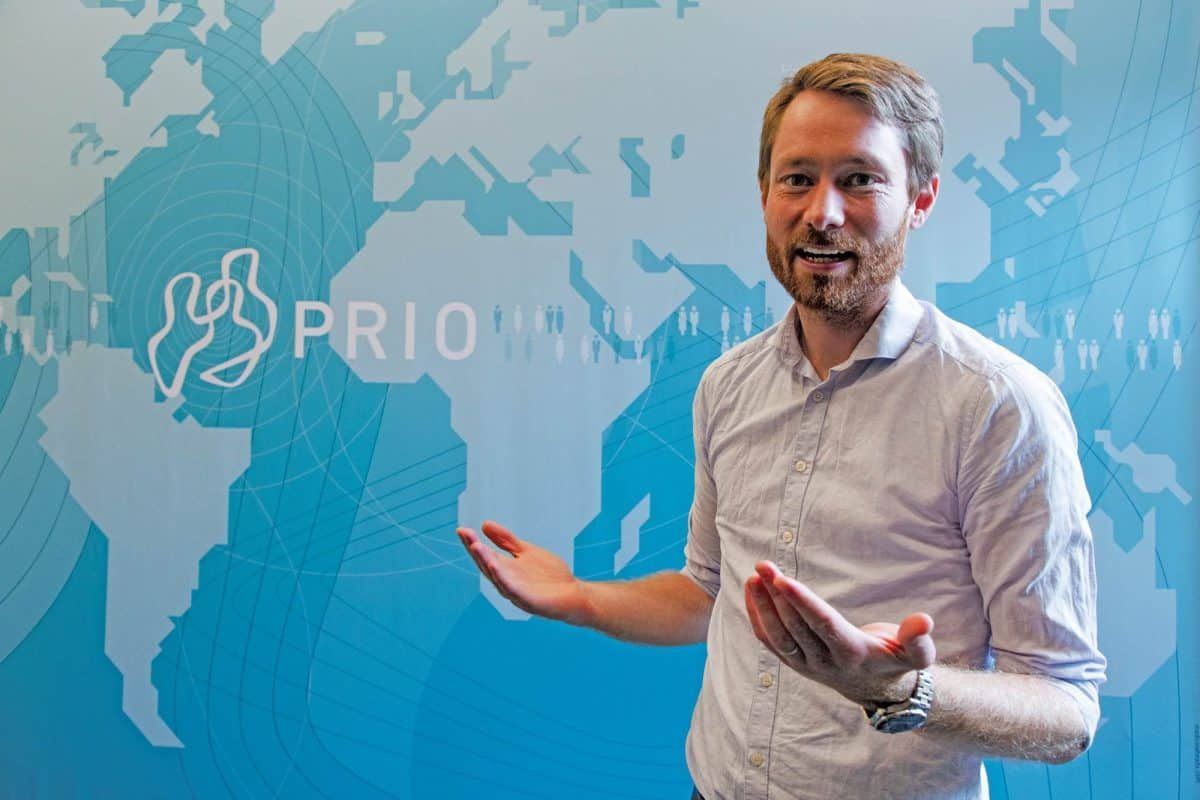
The world has become a more peaceful place, suggests a new study, despite the war in Syria entering its eighth year and costing thousands of lives.
Experts at the Peace Research Institute Oslo (PRIO) have used statistics for several years to conduct research on armed conflicts.
They work closely with some of the country’s foremost statisticians at the University of Oslo in Norway.
Ever since its founding in 1959, the Institute has researched why war happens, how war develops and what steps can be taken to halt conflicts.
To do so, PRIO has collected figures from all possible conflicts, the countries that are at war, and how many are killed.
The statistics show that fewer people than previously die in armed conflicts since the Korean War ended in 1953.
Doctor Havard Mokleiv Nygard, research director at PRIO, said: “The wars after the Korean War have killed a quarter as many people as the wars before the Korean War.
“The change after this breaking point is an indication that the world has become a more peaceful place.”
Professor Nils Lid Hjort, of the University of Oslo, said: “Although the Korean War is the best guess, the breaking point could also have been in 1945 or at the end of the Vietnam War.
“However, although the exact time is uncertain, we still see a clear difference between the number of killed before and after the breaking point.”
The idea that the world has become more peaceful was put on the international agenda in 2011 by Harvard University Professor Steven Pinker in his book about the history of violence, called The Better Angels Of Our Nature.
He built a lot of his research on statistics from PRIO.
But not everyone agreed with his conclusion.
Speaking to the research magazine Apollon, Dr Nygard said: “The distribution of the number of people dying in war does not follow any normally distributed curve.
“There are many wars in the middle of the curve with a certain number of killed and few wars on the curve’s extremes, with few or many killed.
“Wars can erupt that kill a great many people. An example is the Second World War. A Third World War can also occur, in principle, with 150 million killed.”
Professor Aaron Clauset, of the University of Colorado in the US, is among the academics who doesn’t believe the world has become more peaceful.
He believes that the trend after the Korean War must continue for another 150 years before he is comfortable, purely statistically speaking, saying that the world has become more peaceful.
Dr Nygard said: “The models can also be used to say whether the First or Second World War could have been foreseen, based on the conflict data we had before the wars started.
“It’s very rare for a conflict to start overnight. There are often escalations from something very small, to something very big.”
Now the researchers are developing statistical tools that can determine when crises and disputes between countries escalate into wars.
Dr Nygard added: “In order to handle conflicts while they are still small, we need to understand how conflicts develop.
“Once we understand this, we hope that it will become possible to deal with conflicts and stop them in time. Without statistical analysis, it is impossible to do so.
“The world spends far too few resources today on prevention. Steps are not taken until after the fact.
“We still know too little about how to prevent conflicts. It is then important to understand the breaking points in order to prevent conflicts in a systematic and manageable manner.
“We have already been able to determine that a number of conflicts could have been considerably smaller if peacekeeping forces had been deployed.
“It is not ethically defensible to initiate an experiment where some countries receive peacekeeping forces and others do not.
“We must therefore use statistical tools that can simulate the experiment.”
Over the next three years, Dr Gudmund Horn Hermansen, associate professor at Oslo University’s Department of Mathematics, intends to find the reasons why conflicts escalate.
He will look at the interaction between non-violent and violent protests and what it means for a conflict to escalate and why some conflicts stop.
He said: “Our ambition is to be able to say what it takes to escalate a conflict and how it is possible to prevent this from happening.”
By Stephen Beech